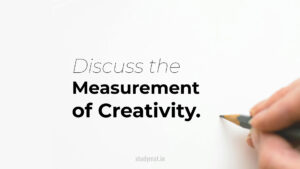In this article, we will discuss Write a short note on Free Association and Dream Analysis.
Free Association and Dream Analysis.
Free Association and Dream Analysis are two key techniques used in psychoanalysis and psychodynamic therapy to explore the unconscious mind and gain insight into a client’s thoughts, emotions, and underlying conflicts.
Free Association involves the client expressing their thoughts, feelings, and experiences without censorship or judgment. They are encouraged to speak or write whatever comes to mind, even if it seems irrelevant or illogical. The goal is to bypass conscious defences and allow unconscious material to emerge. Through free association, clients may access repressed memories, unresolved conflicts, hidden desires, and unconscious motivations. The spontaneous and unfiltered expression of thoughts and feelings often leads to unexpected connections and insights.
Dream Analysis, on the other hand, focuses specifically on exploring the content and symbolism of dreams. Dreams are seen as a pathway to the unconscious, containing meaningful and symbolic messages that reflect underlying psychological processes. The therapist encourages the client to describe their dreams in detail, including emotions, characters, settings, and events. The therapist then helps the client interpret the symbolic meaning of the dream elements, drawing connections to the client’s waking life experiences and unconscious conflicts. Dream analysis can provide valuable insights into unconscious desires, fears, unresolved issues, and the client’s internal dynamics.
Both Free Association and Dream Analysis rely on the assumption that the unconscious mind influences thoughts, feelings, and behaviours. By bringing unconscious material into conscious awareness, clients can gain insight into their psychological processes and work through unresolved conflicts or emotional difficulties. These techniques can help clients develop self-awareness, understand the root causes of their distress, and promote personal growth and healing.
It is important to note that Free Association and Dream Analysis require a skilled and trained therapist who can navigate the complexities of the unconscious mind. The therapist must create a safe and supportive environment for the client to explore their associations and dreams without judgment or censorship. The interpretations and insights offered by the therapist are subjective and collaborative, with the client’s active participation in the exploration process.
While Free Association and Dream Analysis originated within psychoanalysis, elements of these techniques have been incorporated into other therapeutic modalities. Psychodynamic therapy and some humanistic approaches utilize free association and dream analysis as tools for self-exploration, understanding, and change.
Overall, Free Association and Dream Analysis offer valuable pathways to explore the unconscious mind, reveal hidden aspects of oneself, and gain deeper insights into one’s thoughts, emotions, and psychological functioning.
Follow us:
If you like this article, you can Follow us on Facebook.
Also, you can Join our Official Facebook Group for QnA Sessions and Discussions with the worldwide IGNOU community.


